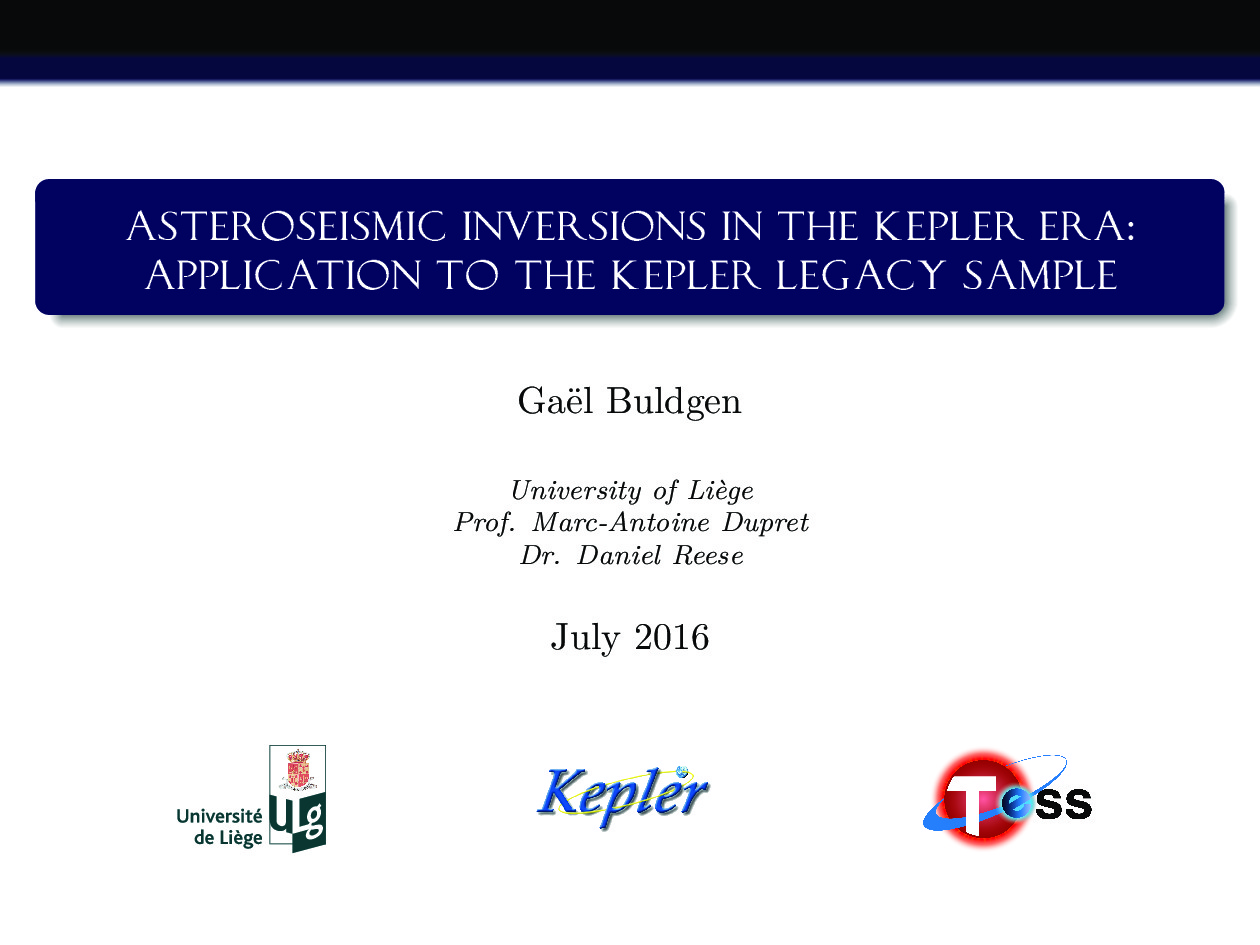Asteroseismic inversions in the Kepler era: application to the Kepler Legacy sample
Affiliation
Université de Liège
Main category
Natural Sciences (Astrophysics and Astrononmy)
Abstract
In the past few years, the CoRoT and Kepler missions have carried out what is now called the space photometry revolution. This revolution is still ongoing thanks to K2 and will be continued by the Tess and Plato2.0 missions. However, the photometry revolution must also be followed by progress in stellar modelling, in order to lead to more precise and accurate determinations of fundamental stellar parameters such as masses, radii and ages. In this context, the long-lasting problems related to mixing processes in stellar interior is the main obstacle to further improvements of stellar modelling. In this talk, we will apply structural asteroseismic inversion techniques to targets from the Kepler LEGACY sample and analyse how these can help us constrain the fundamental parameters and mixing processes in these stars. Our approach is based on previous studies using the SOLA inversion technique (Pijpers & Thompson 1994) to determine integrated quantities such as the mean density (Reese et al. 2012), the acoustic radius, and core conditions indicators (Buldgen et al. 2015a, Buldgen et al. 2015b), and has already been successfully applied to the 16Cyg binary system (Buldgen et al. 2016, Buldgen et al. in prep). We will show how this technique can be applied to the Kepler LEGACY sample and how new indicators can help us to further constrain the chemical composition profiles of stars as well as provide stringent constraints on stellar ages.
Do you have problems viewing the pdf-file? Download presentation
here
If the presentation contains inappropriate content, please
report the presentation. You will be redirected to the landing page.
